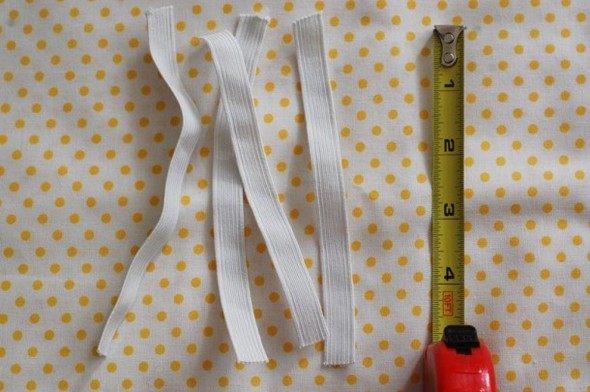Fitted sheets are gaining more and more popularity every year and are in demand, especially among people who want to make their vacation (mainly at night) as comfortable as possible. You can buy such bedding, order it in an online store, or make it yourself, focusing on a certain mattress size. So, how to sew this part correctly with your own hands?
Is it possible to sew an elastic band into a regular sheet?
There is nothing difficult about this, provided that The size of the finished rectangular sheet will be larger than the surface area of the mattress. The thicker the mattress, the greater the fabric supply should be.
By the way! If the length or width is not enough, you can add the same, similar or generally different color material to the original piece. It is only desirable that their composition (calico-calico, satin-satin) and density match.
To work you will need:
- purchased sheet or material for it;
- linen elastic;
- tape measure;
- ruler;
- tailor's scissors;
- safety pin;
- work table;
- a sewing machine (you can, of course, do without it, but the result will be worse and it will take a lot of time);
- a needle and thread corresponding to the thickness of the fabric (it is better to prepare threads in two colors: to match the sheets for stitching and contrasting ones for basting).
It should also be taken into account that the elastic can be sewn either around the entire perimeter or only in the corners. The first option is preferable for those who sleep poorly, toss and turn a lot in their sleep, and are overweight. It is optimal if the mattress is light and thin (up to 10 cm).

The second is suitable for high and heavy mattresses. Their weight will not allow the edges of the bedding to come out.
Having decided on the configuration of the sheet, having prepared the workplace and all the necessary tools, you can begin cutting and sewing.
How to do it - step by step
To equip your sheets with a useful life hack that will keep them on the mattress, you need to:
- Take measurements from the mattress (length – L, width – S, height – H). Determine the additional value x equal to the seam and hem allowance.
- Calculate the dimensions of the future product. Its length will be equal to L + 2H + x. Width – S + 2H + x.
- Mark and cut squares with side 2H + hem at the corners of the sheet.
- Stitch the sides of the cut out squares from the inside and finish the edges of the seams with an overlock or zigzag stitch. For beginner needlewomen It is better to baste the seams by hand first.
- Fold the fabric around the perimeter, sweep and stitch so that the distance from the edge to the stitch is slightly larger than the width of the elastic (by 2-4 mm).
- Cut the elastic band to the required length. It is calculated using the formula: (2L + 2S) – 0.1*(2L + 2S).
- Using a pin, carefully thread the elastic band around the circle and sew the ends together.
- Try the sheet on the mattress and make sure it is securely fastened.
By the way! This option with a drawstring is quite convenient because the elastic inside “moves” freely, it can be tightened at any time if it is loose, or changed without much difficulty.

Sew elastic at the corners
If there is no need to tighten the sheet around the entire perimeter, you can sew the elastic in fragments. Each corner will require approximately 0.4 m, therefore, you need to cut and prepare 4 such strips. Next you need to do the following manipulations:
- place a piece of elastic parallel to the edge so that its middle coincides with the seam at the corner;
- Fold the edge so that the elastic closes almost completely. Wherein it can be moved close to the fold or leave a gap of 3-5 mm;
- make a small stitch along the corner seam along the elastic to secure its center;
- mark the edges of the elastic on the fabric, make additional marks about 5 cm further from the corner on each side;
- stretch the elastic under the fabric to the second mark, stitch parallel to the corner seam (both ends);
- make another hem so that the tape “hides” inside the seam, and then, stretching it, make a stitch between it and the folded edge or directly along the elastic;
- do the same with the three remaining corners.

Repairing an old fitted sheet
Any thing that is used constantly will gradually wear out. High-quality dense fabric sheets often “live” longer than rubberized tape. If the latter becomes unusable and no longer holds its original shape, it can be easily altered and replaced.
In the version with a drawstring you should:
- open a small section of the seam (about 1 cm);
- pull out the stretched elastic band;
- measure out a new one, strong and elastic;
- attach to a pin;
- thread through the hole;
- stretch along the perimeter;
- connect the edges.
If the elastic is stitched to the fabric along its entire length, you will have to rip the entire seam, iron the material and replace it.
Having even the most modest tailoring skills, you can sew or repair a sheet with an elastic band yourself, without resorting to the services of an atelier. At the same time, the entire process, starting from the selection of high-quality material, the desired color, size and structure, to the design of the optimal model and its manual production, will be under control, and the result will meet expectations.


 0
0





